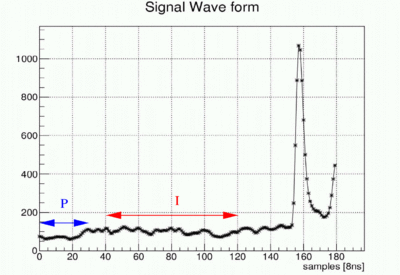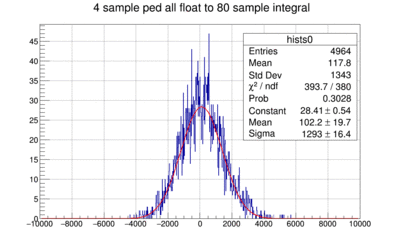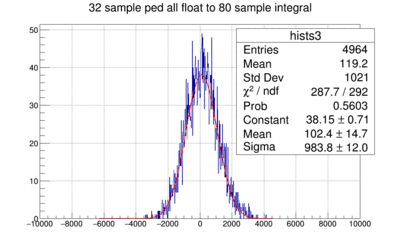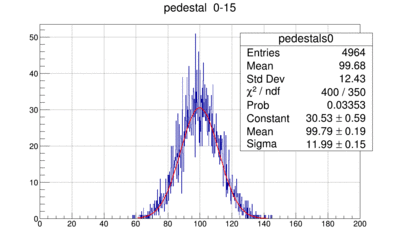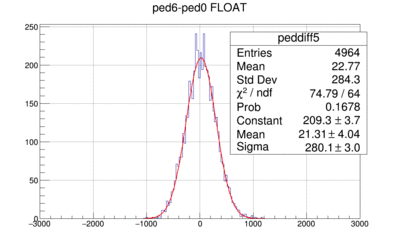Difference between revisions of "CDC Pedestal Studies"
m (Zihlmann moved page CDC Studies to CDC Pedestal Studies) |
|
(No difference)
| |
Revision as of 08:39, 24 June 2015
Pedestal Subtraction
Based on cosmic ray data with BCAL trigger we look for events with the following signature in the CDC:
The first test was done by using the region  (blue) to determine a pedestal and the region I (red) to determine an Integral and then subtract the proper pedestal from the Intergral as follows:
(blue) to determine a pedestal and the region I (red) to determine an Integral and then subtract the proper pedestal from the Intergral as follows:
 where
where  is the number of samples used to calculate the pedestal and 80 is the number of samples in the Integral I.
In the case of no signal in the region I the distribution D is expected to be around zero with a sigma that reflects the resolution and depends on the number samples
is the number of samples used to calculate the pedestal and 80 is the number of samples in the Integral I.
In the case of no signal in the region I the distribution D is expected to be around zero with a sigma that reflects the resolution and depends on the number samples  used in determining the pedestal.
As an example the distribution, with 4 samples and 32 samples in the pedestal calculation, looks like this:
used in determining the pedestal.
As an example the distribution, with 4 samples and 32 samples in the pedestal calculation, looks like this:
 |
mean F | sigma F | mean I | sigma I |
|---|---|---|---|---|
| 4 | 102.2 | 1293 | 96.5 | 1276 |
| 16 | 119.0 | 1121 | 163.4 | 1120 |
| 20 | 121.1 | 1080 | 145.1 | 1080 |
| 32 | 102.4 | 984 | 159.0 | 978 |
| 64 | 40.9 | 680 | 84.6 | 685 |
Note this is not what one would expect. The mean should be around zero!
Looking just at the pedestals you get the expected results like here, a pedestal determined over the first 16 samples:
However if you look at the distribution of the above two pedestal calculations P6-P0 you get the following:
